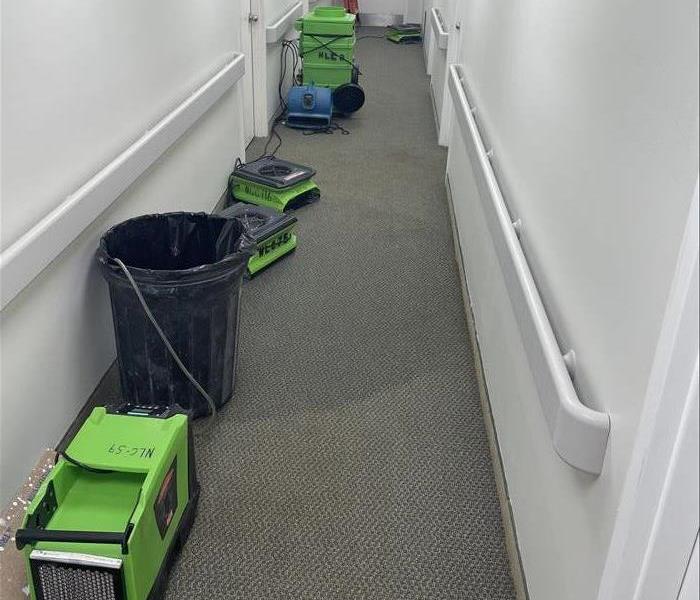Guarding Your Haven: Steps to Prevent Mold Exposure in Your Home
11/25/2023 (Permalink)
Your home is a sanctuary where you seek comfort, peace, and safety. One potential intruder that can threaten this haven is mold. At SERVPRO, we're dedicated to helping you maintain a healthy living environment. In this unique blog post, we'll share practical steps to prevent mold exposure in your home.
1. Maintain Optimal Indoor Humidity:
Mold thrives in damp environments. To deter its growth, it's crucial to control indoor humidity levels:
- Use Dehumidifiers: Invest in dehumidifiers to maintain humidity levels between 30-50%.
- Ventilation: Ensure proper ventilation in areas prone to moisture, such as bathrooms, kitchens, and basements.
- Repair Leaks: Promptly fix any leaks in your plumbing or roof to prevent moisture buildup.
2. Regularly Clean and Inspect:
A proactive approach to cleaning and inspection can help prevent mold growth:
- Regular Cleaning: Clean and dust your home regularly to remove potential sources of mold, such as dust and dirt.
- Inspect Hidden Areas: Don't forget to inspect hidden and less frequently visited areas, like basements, attics, and crawl spaces.
- Check for Leaks: Regularly inspect pipes, faucets, and appliances for any signs of leaks.
3. Proper Ventilation:
Good ventilation can reduce moisture buildup and inhibit mold growth:
- Use Exhaust Fans: Utilize exhaust fans in bathrooms and kitchens to remove excess moisture and odors.
- Open Windows: When weather permits, open windows to allow fresh air to circulate throughout your home.
- Ventilation in Appliances: Ensure that appliances like clothes dryers are properly vented to the outside.
4. Address Condensation:
Condensation can contribute to mold growth, particularly on windows, pipes, and surfaces:
- Insulate Surfaces: Insulate windows and pipes to reduce condensation buildup.
- Use Sealants: Seal cracks and gaps around windows and doors to prevent warm, humid indoor air from meeting cold surfaces.
5. Properly Store Items:
Clutter and improper storage can create environments conducive to mold growth:
- Elevate Stored Items: Keep items stored off the ground to prevent moisture absorption.
- Use Airtight Containers: Store items in airtight containers to protect them from moisture and mold.
6. Regularly Clean and Maintain HVAC Systems:
Your heating, ventilation, and air conditioning (HVAC) systems can be breeding grounds for mold if not maintained properly:
- Change Filters: Regularly change HVAC filters to prevent dust and mold spores from circulating.
- Professional Maintenance: Schedule regular professional HVAC maintenance to ensure the system is clean and functioning correctly.
7. Be Mindful of Mold-Resistant Materials:
When renovating or furnishing your home, consider using mold-resistant materials:
- Drywall and Paint: Opt for mold-resistant drywall and paint in areas prone to moisture.
- Flooring: Choose mold-resistant flooring materials like tile or hardwood.
8. Educate Yourself:
Knowledge is a powerful tool in preventing mold exposure. Educate yourself and your family members about mold prevention, recognition, and response.
Conclusion:
Preventing mold exposure in your home is a proactive endeavor that requires diligence and attention to detail. By following these practical steps, you can maintain a mold-free living environment that promotes the health and well-being of your family. At SERVPRO, we prioritize your safety and are here to support you in preserving your home as a haven of comfort and health.

 24/7 Emergency Service
24/7 Emergency Service
